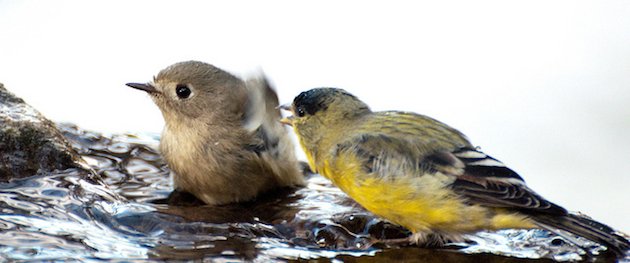
This spunky little finch is the smallest member of the North American genus Carduelis. I caught this male pictured above harassing a female Ruby-crowned Kinglet as she was bathing in the water feature.
Unlike the more common American Goldfinch, the Lesser Goldfinch’s (Spinus psaltria) plumage does not change color during breeding season. The male (seen below) has a black cap and, in Washington, Oregon, California, and Baja California, nearly all males have green backs. Eastward, frequency of individuals with black on auriculars, neck, and back increases; southward into Mexico, nearly all adult males have completely black upperparts1. Click on photos for full sized images.
This is their range map courtesy of NatureServe Explorer
The male also has bright yellow underparts.
The female Lesser Goldfinch can sometimes be confused with the female American Goldfinch in breeding plumage. This is the female Lesser Goldfinch…
and these are American Goldfinches in breeding plumage.
The orange beak on the female American Goldfinch and its white undertail coverts distinguish it from the female Lesser Goldfinch below, which has yellow undertail coverts and a darker beak.
Both of these species show gregarious flocking behavior except when nesting. I was lucky enough a few years ago to spot a Lesser Goldfinch building a nest in a nearby tree while checking my Bluebird boxes.
It was great fun watching them raise their young that summer. They always bring their youngsters to the feeders where, along with American Goldfinches and Pine Siskins, they not only make short order of sunflower and nyjer seed, they like to feed on sunflowers in the garden as well. You can hear the intricate call of the Lesser Goldfinch here.
httpv://youtu.be/j5_bV_46nkI
References: 1Birds of North America Online


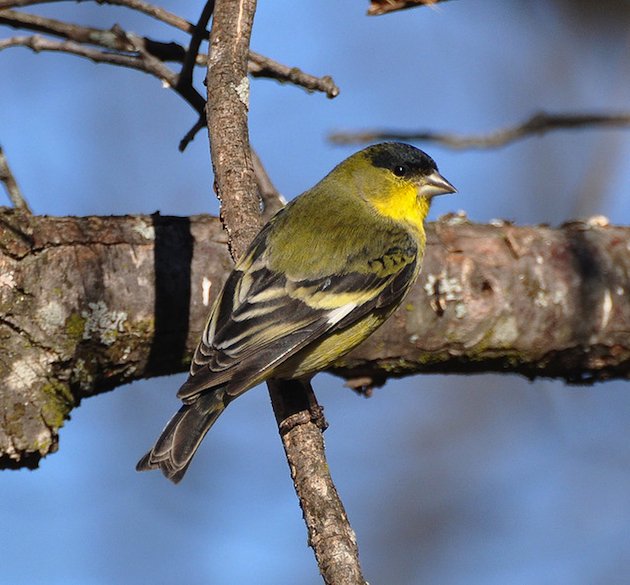
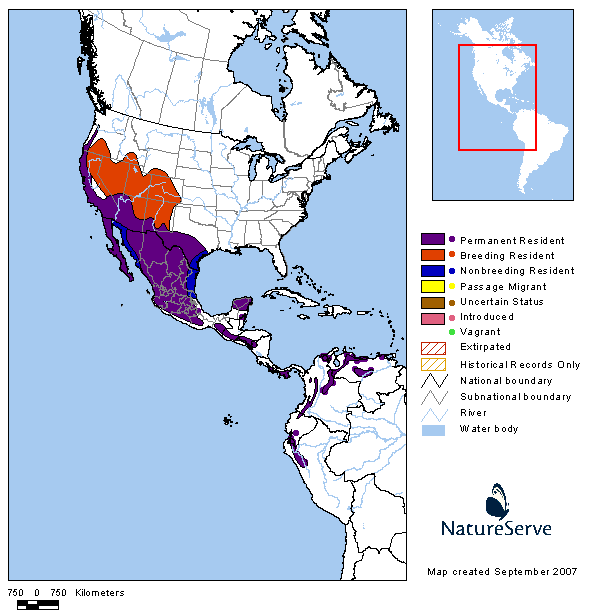
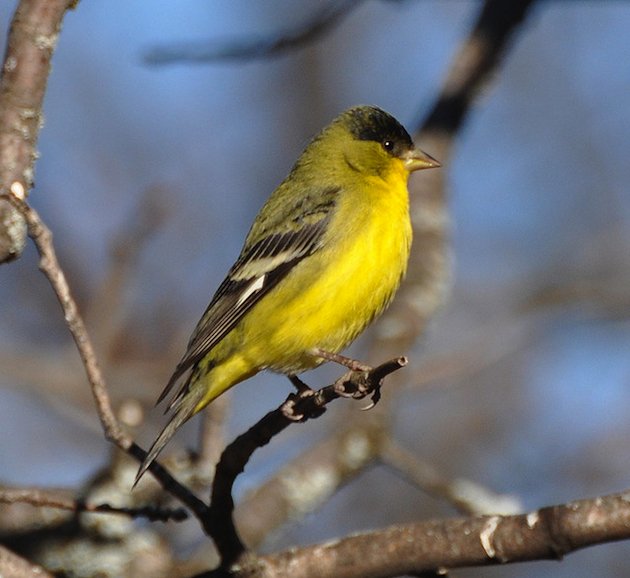
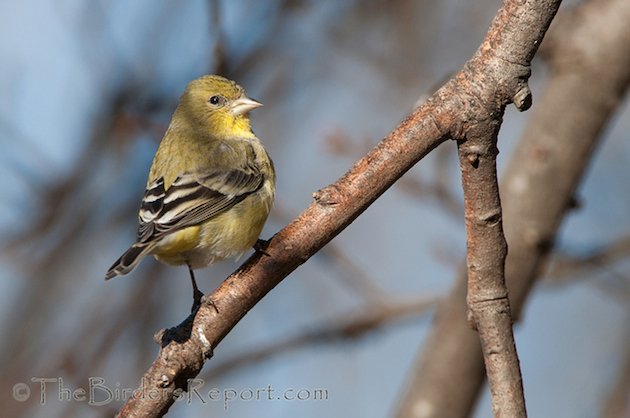
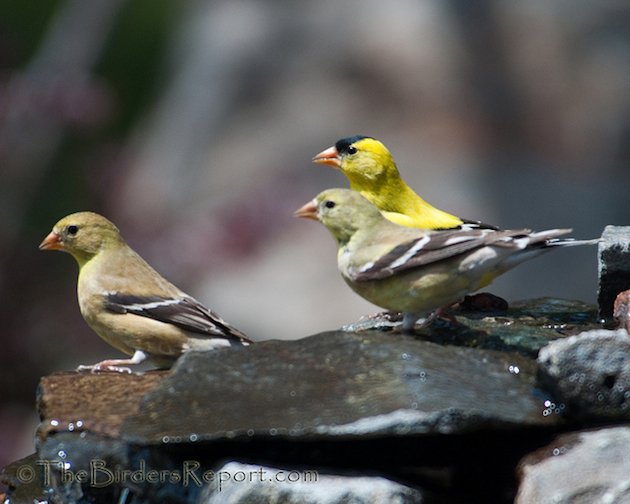
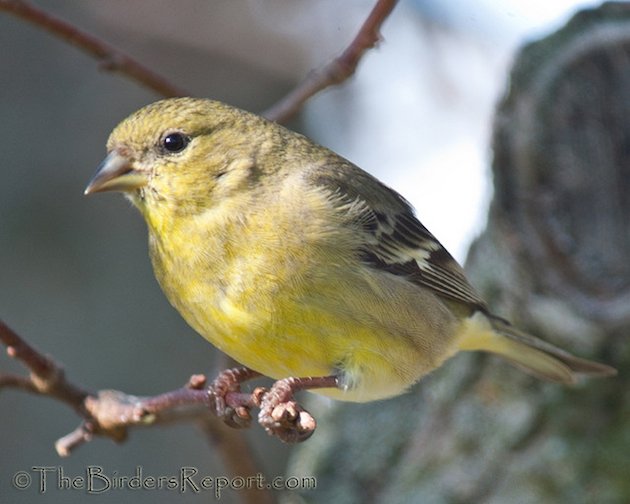
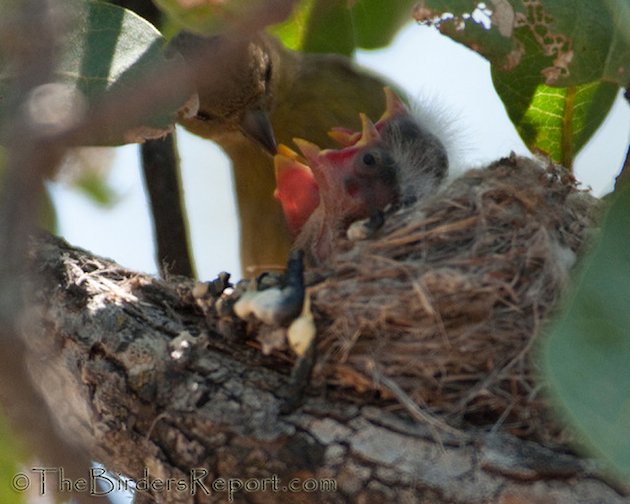











Lots of really cool shots (and video) there Larry! We get the Black-backed version in Costa Rica although it’s much less common. Trapping has extirpated many populations near San Jose but they ares still regular at high elevation sites like Irazu and Turrialba volcanoes and various places in southern Costa Rica.
So bright and pretty!
Lesser Goldfinch visitors to our feeder disappeared last week overnight! We live in Southern California. I suppose they must migrate to Mexico in the winter?
Like Sharon Hunt (12-15-13) a group of us have noticed this disappearance in San Diego (Sept/Oct) . We are wondering where they go. They just reappeared yesterday (10-11-15). Sun flower leaves and tall verbena are also favorites for food.
So are THEY are the ones eating the sunflower leaves? All these years, I thought it was insects, but now, not so sure.
We’ve had them here in TIBURON CA., for a few weeks now. Sometimes in pairs, other times charm’s with around a dozen. Much higher ratio of females to males here.
Nov 22nd 2020 sighting, around 10:30am. Downtown Moscone area SOMA San Francisco CA; 5th Floor deck! Watched six taking a long, boisterous, splashy bath in three large planter saucers set up right outside my window (yes, my best Covid emotional/mental, social distancing therapy!). Popped up a nyjer seed sock after a quick run to Cole’s Hardware and fingers crossed they reappear before continuing on. Have never have had more than 1-3 weeks of continuous sightings of these little guys fall and spring. LOVE them!
They have been our constant companions for months but are gone as of the beginning of December (coinciding with our cooler weather). Party safe in Mexico, friends.